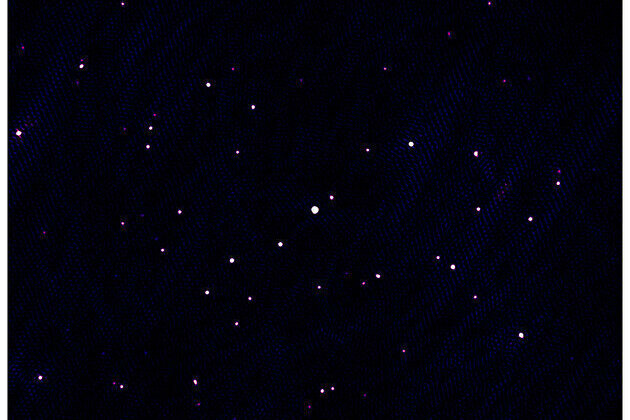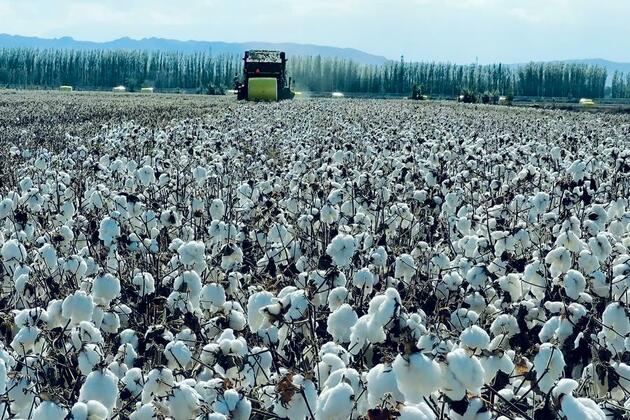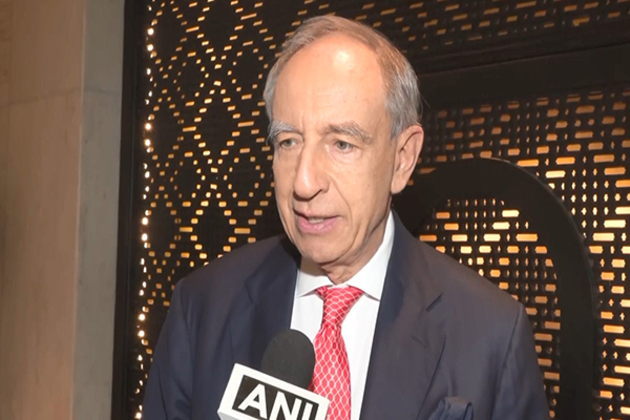Less than 1% of the world's biggest radio telescope is complete - but its first image reveals a sky dotted with ancient galaxies
The Conversation
17 Mar 2025, 19:10 GMT+10

Part of the world's biggest mega-science facility - the SKA Observatory - is being built in outback Western Australia.
After decades of planning, countless hours of work, and more than a few setbacks, an early working version of the telescope has captured its first glimpse of the sky.
Using 1,024 of what will eventually be 131,072 radio antennas, the first SKA-Low image shows a tiny sliver of sky dotted with ancient galaxies billions of light-years from Earth.
This first snapshot shows the system works, and will improve dramatically in the coming months and years - and starts a new chapter in our exploration of the universe.
The SKA-Low telescope is currently under construction on Wajarri Yamaji Country in Western Australia, around 600 kilometres north of Perth. Together with the SKA-Mid telescope (under construction in South Africa), the two telescopes will make up the world's largest and most sensitive radio observatory.
SKA-Low will consist of thousands of antennas spread across a vast area. It is designed to detect low-frequency radio signals from some of the most distant and ancient objects in the universe.
The first image, made using just 1,024 of the planned 131,000 antennas, is remarkably clear, confirming that the complex systems for transmitting and processing data from the antennas are working properly. Now we can move on to more detailed observations to analyse and verify the telescope's scientific output.
The image shows a patch of the sky, approximately 25 square degrees in area, as seen in radio waves.
Twenty-five square degrees is an area of sky that would fit 100 full Moons. For comparison, it would be about the area of sky that a small apple would cover if you held it at arm's length.
The dots in the image look like stars, but are actually some of the brightest galaxies in the universe. These galaxies are billions of light-years away, so the galaxies we are seeing now were emitting this light when the universe was half its current age.
They are so bright because each of these distant galaxies contains a supermassive black hole. Gas orbiting around black holes is very hot and moves very quickly, emitting energy in X-rays and radio waves. SKA-Low can detect these radio waves that have travelled billions of light years across the universe to reach Earth.
SKA-Low and SKA-Mid are both being built by the SKAO, a global project to build cutting-edge telescopes that will revolutionise our understanding of the universe and deliver benefits to society. (SKA stands for "square kilometre array", describing the initial estimated collecting area of all the antennas and radio dishes put together.)
My own involvement in the project began in 2014. Since then I, along with many local and international colleagues, have deployed and verified several prototype systems on the path to SKA-Low. To now be part of the team that is making the first images with the rapidly growing telescope is extremely satisfying.
SKA-Low will be made up of 512 aperture arrays (or stations), each comprised of 256 antennas.
Unlike traditional telescopes, aperture arrays have no moving parts, which makes them easier to maintain. The individual antennas receive signals from all directions at once and - to produce images - we use complex mathematics to combine the signals from each individual antenna and "steer" the telescope.
The advantages and flexibility of aperture arrays come at the cost of complex signal processing and software systems. Any errors in signal timing, calibration or processing can distort the final image or introduce noise.
For this reason, the successful production of the first image is a key validation - it can only happen if the entire system is working.
Once completed, SKA-Low promises to transform our understanding of the early universe.
The antennas of the full telescope will be spread across an area approximately 70 kilometres in diameter, making it the most sensitive low-frequency radio array ever built.
This unprecedented sensitivity to low-frequency radio signals will allow scientists to detect the faint signals from the first stars and galaxies that formed after the Big Bang - the so-called "cosmic dawn". SKA-Low will be the first radio telescope capable of imaging this very early period of our universe.
It will also help map the large-scale structure of the universe. We expect the telescope will also provide new insights into cosmic magnetism, the behaviour of interstellar gas, and the mysterious nature of dark matter and dark energy.
The sensitivity and resolution of SKA-Low gives it a huge discovery potential. Seven out of the top 10 discoveries from the Hubble Space Telescope were not part of the original science motivation. Like the HST, SKA-Low promises to be a transformative telescope. Who knows what new discoveries await?
SKA-Low's commissioning process will ramp up over the course of the year, as more antenna arrays are installed and brought online. With each additional station, the sensitivity and resolution of the telescope will increase. This growth will also bring greater technical challenges in handling the growing complexity and data rates.
By the end of 2025, SKA-Low is expected to have 16 working stations. The increased volume of output data at this stage will be the next major test for the telescope's software systems.
By the end of 2026, the array is planned to expand to 68 working stations at which point it will be the the most sensitive low-frequency radio telescope on Earth.
This phase will be the next big test of the end-to-end telescope system. When we get to this stage, the same field you see in the image above will be able to comprehensively map and detect up to 600,000 galaxies. I'm personally looking forward to helping bring it together.
 Share
Share
 Tweet
Tweet
 Share
Share
 Flip
Flip
 Email
Email
Watch latest videos
Subscribe and Follow
Get a daily dose of Perth Herald news through our daily email, its complimentary and keeps you fully up to date with world and business news as well.
News RELEASES
Publish news of your business, community or sports group, personnel appointments, major event and more by submitting a news release to Perth Herald.
More InformationInternational Business
SectionUS, Canadian farmers face rising fertilizer costs amid trade tensions
WINNIPEG, Manitoba: Farmers in the U.S. and Canada are bracing for soaring fertilizer prices as trade tensions escalate between the...
Global GDP growth projected to slow down to 3.1 pct in 2025, 3 pct in 2026: OECD
This photo taken on Feb. 25, 2025 shows the discount promotion signs of a store in Vienna, Austria. (Xinhua/He Canling) The OECD warned...
Moscow accuses London of piracy
Calls to seize Russias frozen central bank assets follow English traditions, the Foreign Ministry has said Russia has accused the...
Moscow accuses London of 'piracy'
Calls to seize Russia's frozen central bank assets follow English traditions, the Foreign Ministry has said ...
Houthis claim new attack on US navy carrier group
The strikes come in retaliation for the deadly US bombing campaign launched on Yemen The Yemen-based Houthi movement said it has...
People becoming more stupid study
The shift from reading to consuming video content may have diminished human intelligence, research finds Human intellectual abilities...
Australia
SectionI'm avoiding a hearing test because I don't want chunky hearing aids. What are my options?
One in six Australians have hearing loss and, for most adults, hearing starts to decline from middle age onwards. Many of us, however,...
Less than 1% of the world's biggest radio telescope is complete - but its first image reveals a sky dotted with ancient galaxies
Part of the world's biggest mega-science facility - the SKA Observatory - is being built in outback Western Australia. After decades...
Reinvestigation: French video program accusing Chinese company of "forced labor" exposed as fabrications
A cotton harvester is at work in Shawan City, northwest China's Xinjiang Uygur Autonomous Region, Oct. 8, 2024. (Photo by Guan Bing/Xinhua)...
RR's 13-year-old star Vaibhav Suryanshi unleashes "dhoom dhadaka" of hits during training session
Jaipur (Rajasthan) [India], March 17 (ANI): The 13-year-old Rajasthan Royals (RR) batter Vaibhav Suryavanshi, the youngest Indian Premier...
Guest Opinion: ASPI's house of cards: How an anti-China smear machine imploded under its own lies
Screenshot of ASPI's profile page on social media platform X. (Xinhua)According to ASPI's 2020-2021 annual report, out of its total...
Poland State Secy Wladyslaw Bartoszewski on Raisina Dialogue, Trump tariffs, and Starlink dispute
New Delhi [India], March 17 (ANI): As the Raisina Dialogue commences in New Delhi, Polish Secretary of State for Foreign Affairs Wladyslaw...












